So, if you drive down any neighborhood street, you’re bound to find a compact SUV in pretty much every driveway. They sell in droves, and the go-to option is almost always the Toyota RAV4, selling about a half million units many years. However, Hyundai has been offering a compelling alternative for years with its entry: the Tucson. It just had its best sales ever last year and Hyundai is hoping to keep that momentum with a big refresh this year adding even more features and technology. So, who wins in a 2025 Hyundai Tucson vs. 2025 Toyota RAV4 battle?
Pricing and Equipment
So, first off, let’s discuss pricing for these two popular crossovers.
Starting with the refreshed Tucson, we have the loaded trim, the Limited. It starts a touch over $40,000 for 2025 and after destination.
Tucson (Hybrid Limited AWD): $40,945 | Options: +$0 | Destination: $1,395 | Total: $42,340
Moving to the RAV4, the trim that aligns with the Tucson on pricing is the XSE with all the extra goodies. This sporty yet high-end trim rings in at a total price of $42,720, after destination.
RAV4 (Hybrid XSE AWD): $37,560 | Options: +$3,765 | Destination: $1,395 | Total: $42,720
By the way, if you want to get the best price from local dealerships and access to invoice pricing info for these two models or any vehicle, we have a tool on our website to do just that. Click here for more information!
Exterior Design
Starting with the exteriors, these two certainly have gone different routes. The RAV4 has always had a mini-4Runner look to it, and here on the XSE, its grille is finished in a premium gloss black color. Meanwhile, the Tucson has quite the radical design for the segment, and for 2025 it’s been more squared off for a tougher look. Flanking their grilles, we have premium LED lighting on both. They have projector LED low and high beams, LED turn signals, and neither have fog lamps.
Continuing to the sides, the models are about 2-inches apart in overall length, and the Tucson has a ton of angles in the sheet metal.
Length: 180.9-inches (RAV4) | 182.7-inches (Tucson)
As a reminder, we don’t score the models based on personal design preference, however, we will award a score to the Toyota for making the option of a two-tone roof available for those who want it.
For wheels, you’ll find large contrast 19-inch alloy wheels on the Tucson and the Toyota maxes out at 18-inches for this trim.
Moving out back, they have very similar features. Both have partially LED taillights, the RAV4 has exposed exhaust outlets, and the Hyundai tows about 13% more weight as a maximum.
Towing: 1,750 lbs. (RAV4) | 2,000 lbs. (Tucson)
Additional Features
As far as the mirrors are concerned, they both have BSM, heating, and LED turn signals.
And speaking of Blind Spot Monitoring, family SUVs need to be safe, and one of the really nice things about these two is that all four of your major active safety features are included as standard. They also have highway assist features, and in the case of the Hyundai, you have a Smart Park system that can pull the vehicle in to or out of tight parking spots unmanned.
The warranties are good on both, but the Hyundai has the advantage in all respects. It has a longer basic and powertrain warranty and also gives you an additional year of complimentary maintenance.
Now the Tucson’s interior sees a big upgrade this year, so let’s if it changes the game.
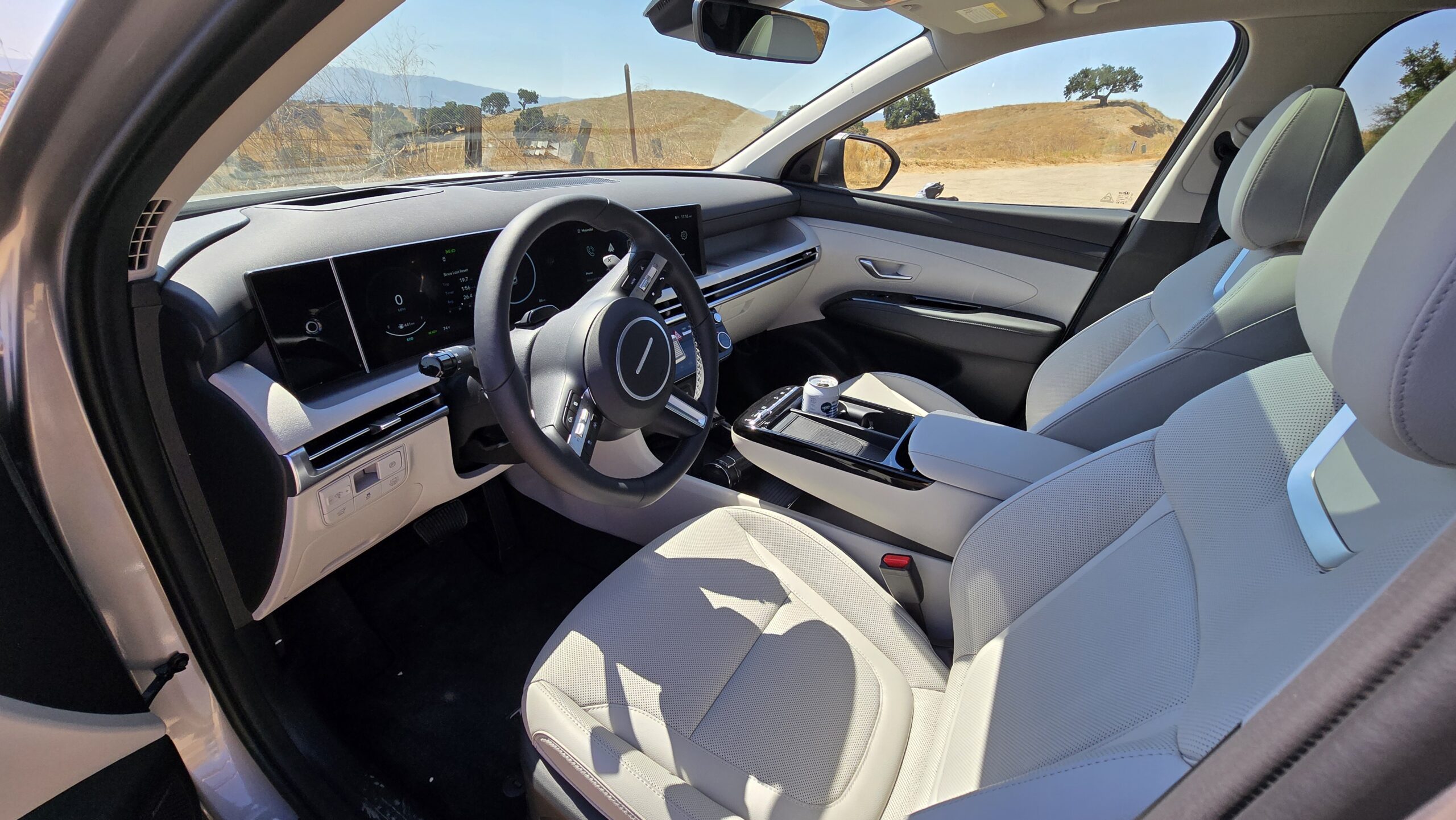
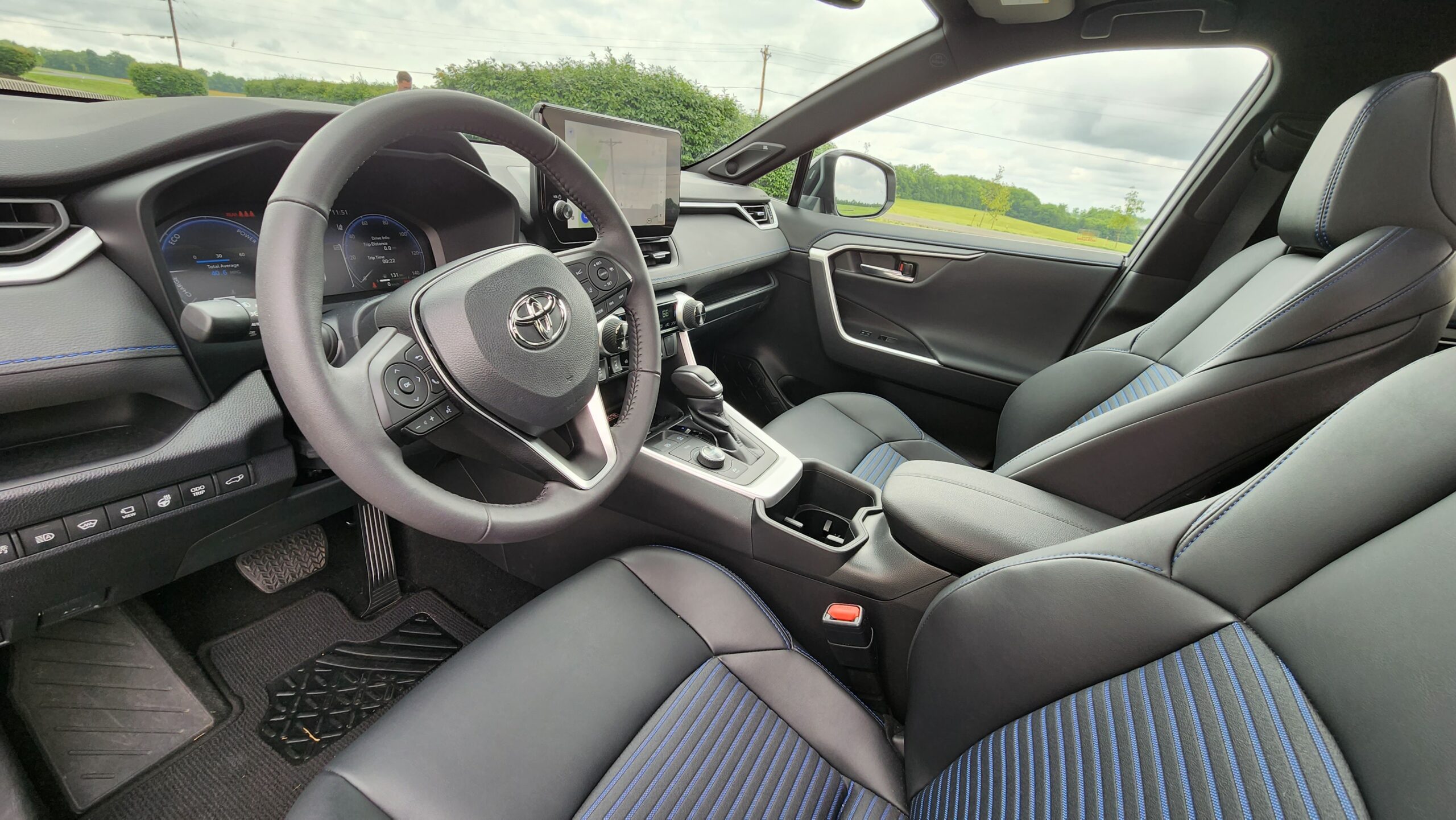
Interior Design
Approaching both SUVs, they have smart entry systems and their brand’s respective key fobs. Remote start is built into the Hyundai’s key fob free forever, while Toyota’s remote services have a trial period before a subscription is required.
Note: Toyota’s remote start can be activated via the app or key fob during the free trial period. Length of trial can vary based on trim level and options selected.
But after opening the doors, you’ll see these two haven’t just focused on functionality, but also luxury and tech.
Before we dig into the features, let’s start with the seats. While they are both 8-way power with lumbar support, the RAV4 is finished in a faux leatherette compared to the real leather in the Tucson. They also are heated but only the Tucson has seat ventilation since that’s not offered on this trim of the RAV4.
Now once inside the cabins, let’s check out the major point category of material quality. The Tucson has always had one of the best cabins in the segment and it continues to be made of premium materials like leatherette, soft-touch plastic, and piano black. The RAV4 also has a lot of soft materials around the cabin, but it doesn’t feel quite as solid or plush as the Hyundai, so we’ll give it a half-point advantage.
After startup, you’ll see big screens that act as gauge clusters on both. They measure in at 12.3 inches and have impressive graphics, but it’s only the Hyundai that has a cool blind-spot camera system.
Continuing in advantages, a new feature for the 2025 Tucson is the addition of a premium head-up display in the windshield. That’s not available on any RAV4.
Moving back, they both have heated, leather-wrapped steering wheels and even rain-sensing wipers as equipped. You may also notice the Hyundai has a fingerprint reader which can sync driver profiles and can allow the vehicle to start securely with the digital key system.
Storage and Technology
Now it’s time to evaluate another major interior section: storage. Hyundai revised this area for the refresh because it’s so important to many buyers. They both have huge center consoles, wireless phone charging pads and passenger storage shelves. However, it’s only the Tucson that leaves a huge open area for fitting large items like a handbag. It takes the storage point.
The reason Hyundai is able to get more storage space is because it has an electronic shifter. Toyota keeps a traditional setup, and when in reverse, you’ll find an advanced 360-degree camera systems on both.
Next, we have the climate controls. For the easiest adjustment, Hyundai went back to physical knobs for temperature just like the RAV4, and they have dual-zone automatic setups.
They both also have physical volume knobs to control their audio systems. The Toyota includes a JBL 11-speaker setup and the Hyundai an 8-speaker Bose system. Both systems are bass-heavy and we’d give the slight advantage to the Toyota with its 3 extra speakers.
Tucson: 8-speaker Bose audio
RAV4: 11-speaker 800-watt JBL Premium audio
People want a high level of technology in cars nowadays, so let’s move to the key element of displays. As far as the sizing, Tucson has a new 12.3-inch setup vs. a 10.5-inch one in the Toyota. That’s about a 15% size advantage. And software-wise, both have highly desirable features like wireless AA and ACP, as well as built-in navigation.
As we wrap up the front of the cabins, both have auto-dimming mirrors with HomeLink remotes, and the Toyota has rear camera functionality if you flip the switch.
Up top, they have large panoramic moonroofs that open and have sunshades.
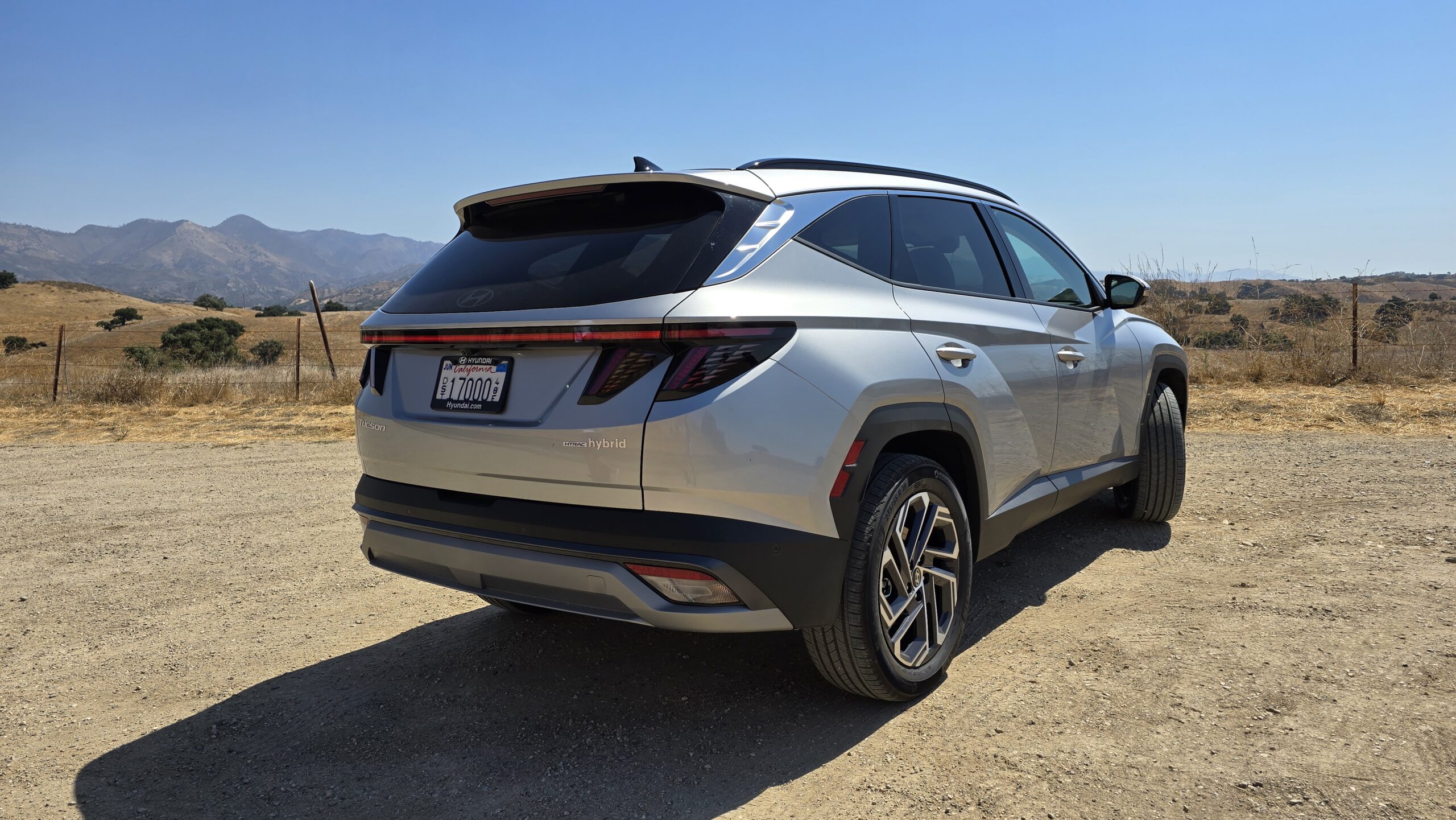

Rear Seats and Cargo
People of all walks of life buy compact crossovers, but they are extremely common for families with kids, so let’s dive into the important back seats. Both are going to have impressive amounts of space. The Tucson comes in about 9% larger in legroom and both are nearly identical for headroom.
Tucson: Legroom: 41.3 inches | Headroom: 39.0 inches
RAV4: Legroom: 37.8 inches | Headroom: 39.5-inches
Now that that’s out of the way, they also have quite a few features. Both give you USB ports and rear vents, but only the Tucson has heated back seats. That is available on the RAV4, but it’ll cost you closer to about $44,000 with the Limited trim.
Now let’s see how much stuff you can bring along with you for the journey. Both have power tailgates with hands-free ability, and once they open, you’ll find nearly identical numbers behind the 2nd row. If you expand it out to their maximums, the Tucson takes the lead by about 8% with an impressive 74.5 cubic feet.
RAV4 (Hybrid): Behind 2nd row: 37.6 cubic feet | Max: 69.8 cu.ft
Tucson (Hybrid): Behind 2nd row: 38.7 cu. ft | Maximum: 74.5 cu. ft (w/ pano)
For other features, the RAV4 includes a spare tire while the Hybrid Tucson does not.
And speaking of hybrid, let’s take these two family options out on the road and see who does it best!
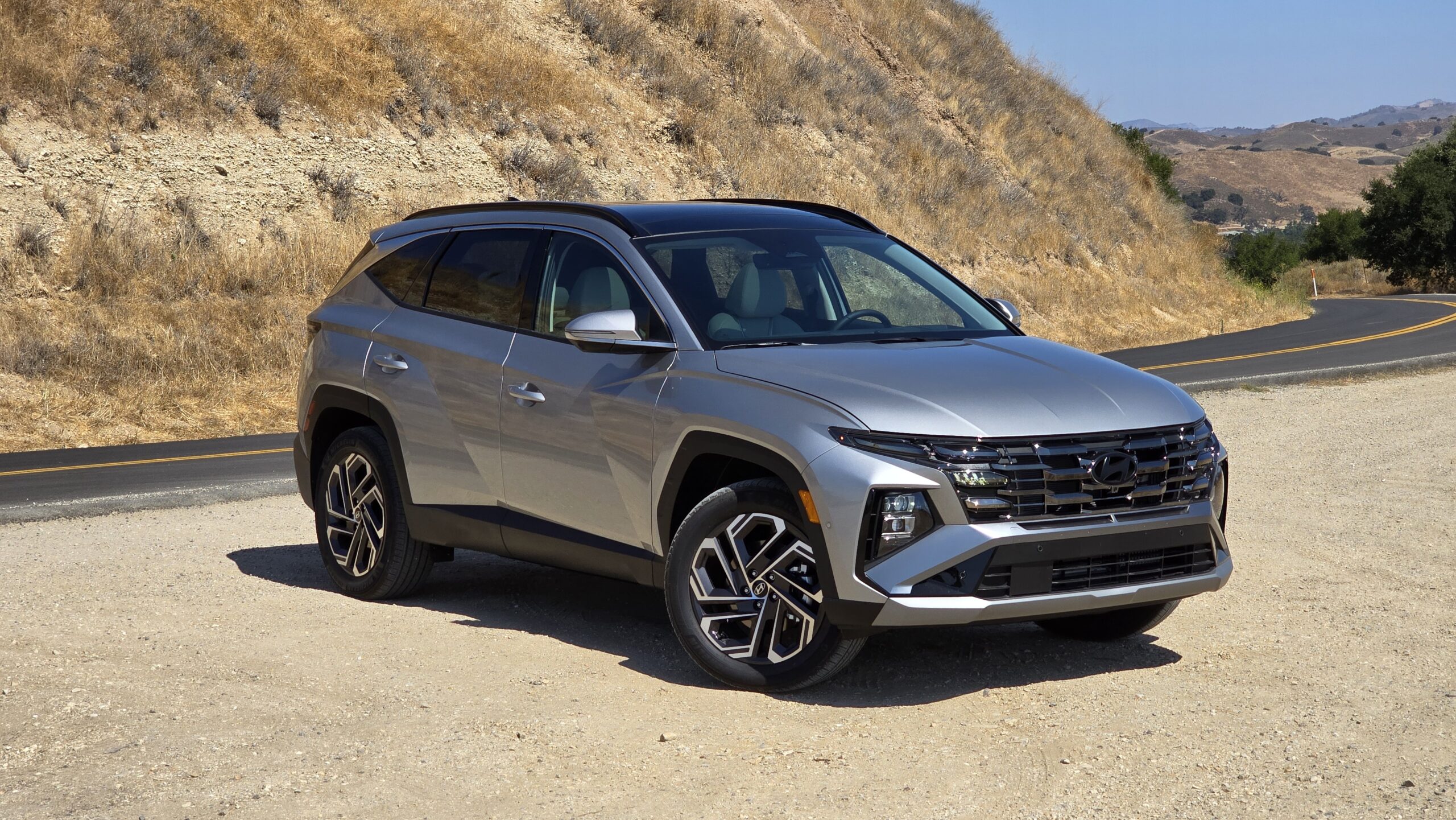
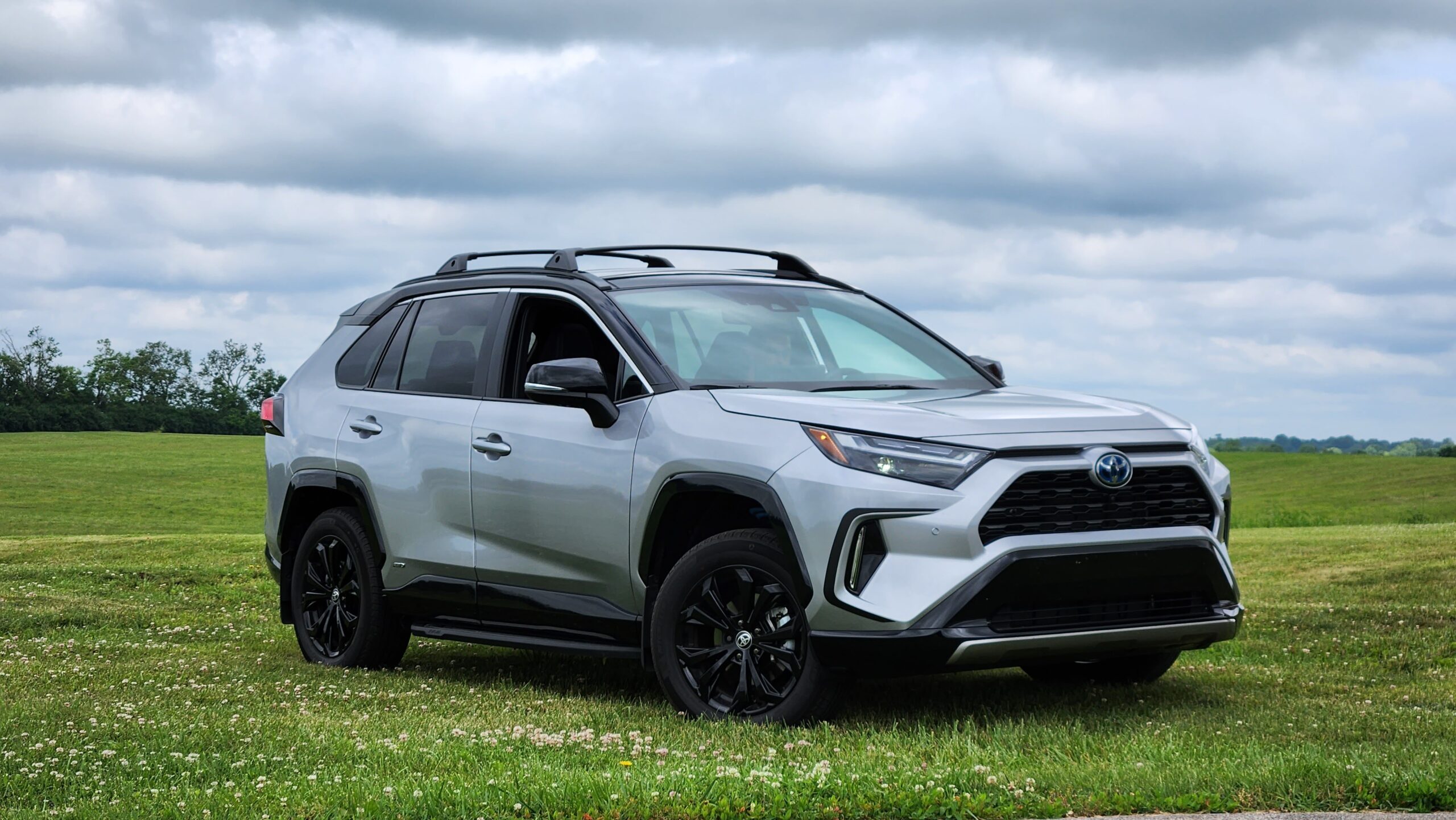
Powertrains
These two have been battling it out for superiority and when it comes to what’s under the hoods, they are quite similar. Several of the RAV4’s trims, including this XSE, are Hybrid-exclusive. In this case, its Toyota’s 4th gen hybrid system combining a 2.5L 4-cylinder and electric componentry for 219 hp. In the case of the Tucson Limited, you can get a regular gas setup or opt for this hybrid powertrain. It makes a little more power than the Toyota at 231hp this year, but overall acceleration feels about the same in both.
RAV4 Hybrid: 2.5L I-4 + Elec: 219 hp
Tucson Hybrid: 1.6L Turbo I-4 + Elec: 231 hp
When it comes to transmissions, these two take completely different approaches. The Toyota uses an eCVT while the Tucson goes for a more traditional 6-speed automatic. People may prefer the more traditional automatic experience, but it’s not a huge difference to most buyers so we won’t award points. Both have all-wheel-drive as standard on the Hybrids.
Test Drive and Fuel Economy
Besides transmissions, you’re probably wondering how quiet the cabins are when cruising. Well, that’s why here at Car Confections, we take a sound-level reading of every vehicle we test on our channel. I do want to point out that the Tucson’s reading was taken in California on a press drive, so it is unofficial until we get it home to Kentucky on our local roads. But even with the rougher roads, the Tucson tested a little over a decibel quieter.
RAV4: 56.7 dB @ 55 MPH
Tucson: 55.4 dB @ 55 MPH
Now let’s talk about an important part for any family SUV, the ride quality. In this area, both impress, although the RAV4 feels a bit more comfortable due to the smaller wheels as equipped.
Lastly, if fuel economy is front-of-mind to you then the RAV4 will make more sense. This hybrid system delivers phenomenal MPGs of 40 combined, while the hybrid Tucson gets worse fuel economy this year at 35 MPG. That’s about a 13% advantage in favor of the Toyota.
RAV4 (Hybrid AWD): 41/38/40 MPG
Tucson (Hybrid AWD): 35/35/35 MPG
Resale and Reliability
In our reviews and comparisons, we are also adding in reliability and resale information to give you a better picture of the overall value beyond just the original MSRP.
Beginning with reliability, we developed the Combined Reliability Index, which takes into account several studies from trustworthy sources, and combines them in a way that gives a more realistic picture. Here, the advantages continue for Toyota. Toyota ranks as the #1 brand for reliability 16 slots ABOVE the industry average, meanwhile Hyundai is slightly below average for reliability, 3 slots below to be exact.
We also put Mason’s economics degree to work to develop a detailed Predicted Resale Value tool. After 5 years and 60,000 miles, Toyota has the 2nd highest predicted resale value of 64.5% and Hyundai a lot closer to the industry average at 55.3%.
Resale is obviously important because it determines how much money you get back, but we can’t forget about the price difference at the original purchase. The Tucson costs $355 more than the RAV4.
I want to emphasize that if money, reliability or resale value matter less to you personally, feel free to disregard these points. And if you’d like to check out all our data about reliability and resale values, as well as learn about our methodology, make sure to head to www.carconfections.com/resale and www.carconfections.com/reliability. Buying a car is a big decision, and this is a great place to compare all the makes you might be cross-shopping.
2025 Hyundai Tucson vs. 2025 Toyota RAV4 Winner!
So that’s it for another exciting hard-fought comparison, between two family winners! Let’s quickly recap here and discuss who should be “your” personal winner.
Tucson:
- More features for the money (vented seats, HUD, heated rear seats)
- Advanced technology (12.3 inch display std, Smart Park, Digital Key, Fingerprint)
- Storage (larger front area and max cargo capacity)
RAV4:
- Better fuel economy
- Better resale value/reliability
- Customizable exterior (two-tone roof)
Now we want to know your opinions, so make sure to head to the comment section and let us know which one you would pick!
Thanks for joining us for another Car Confections Comparison! We’ll catch you next time as we sample the latest automotive delicacies!
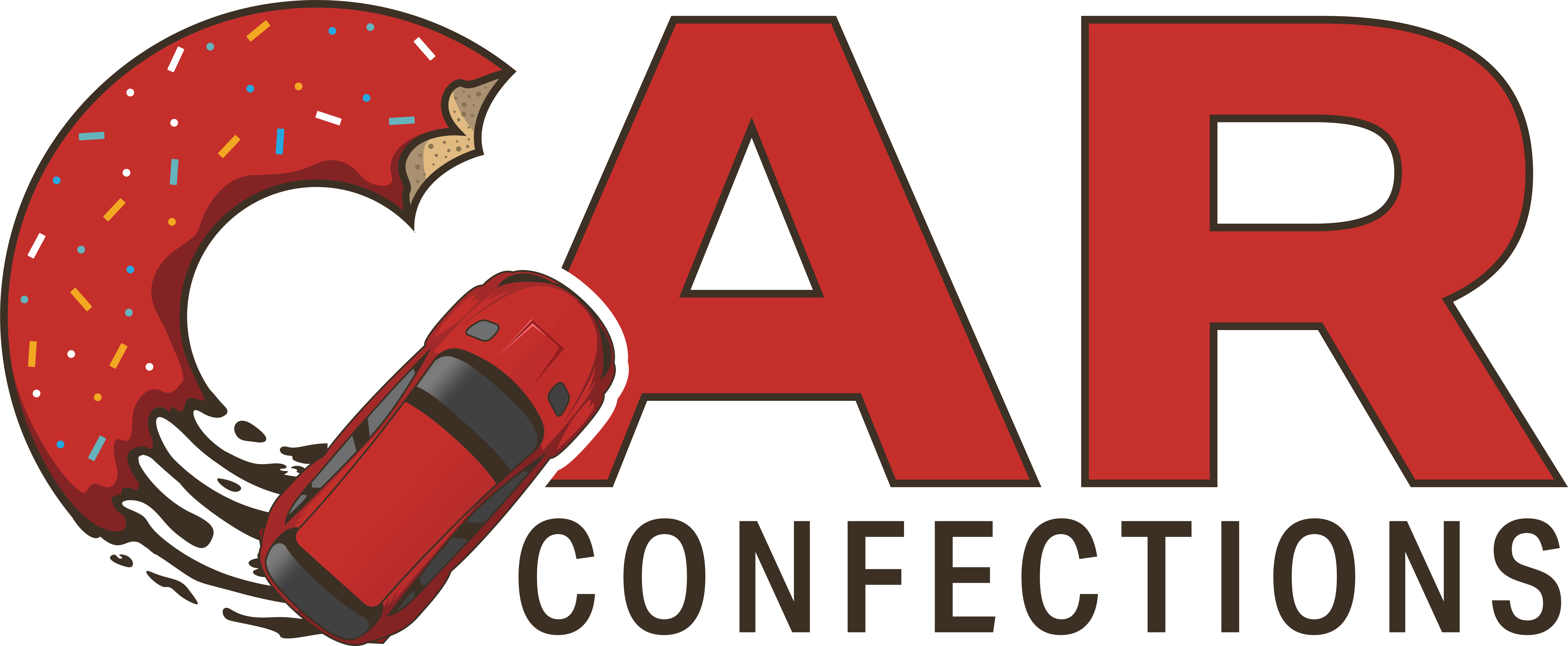
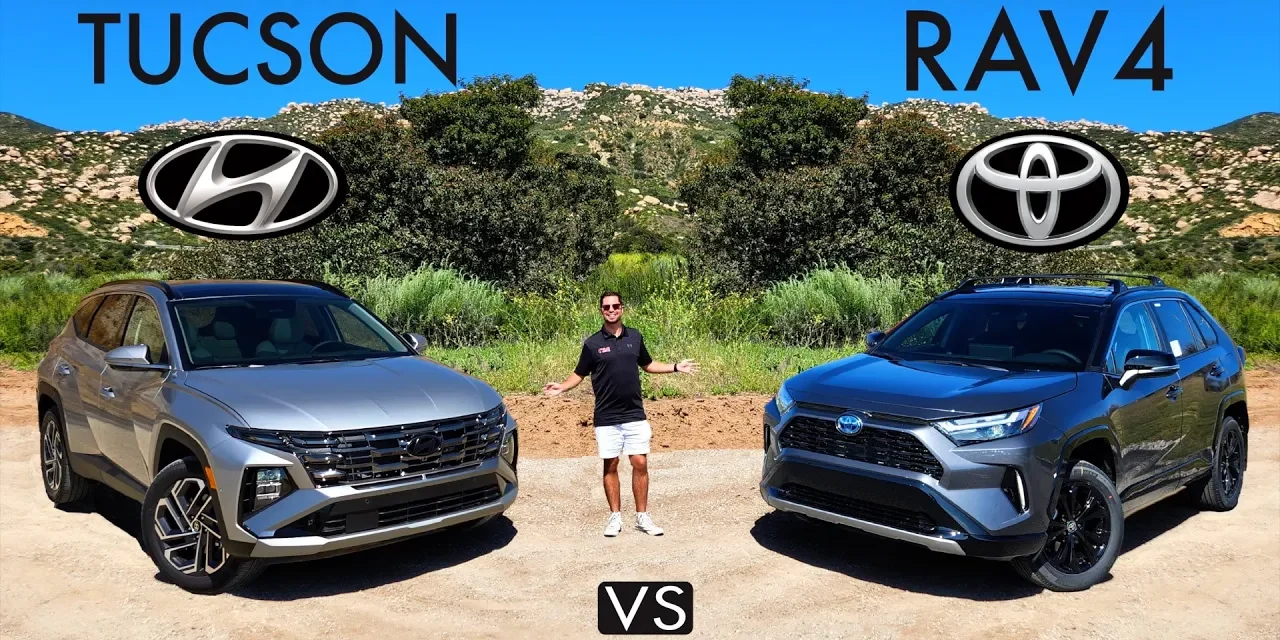
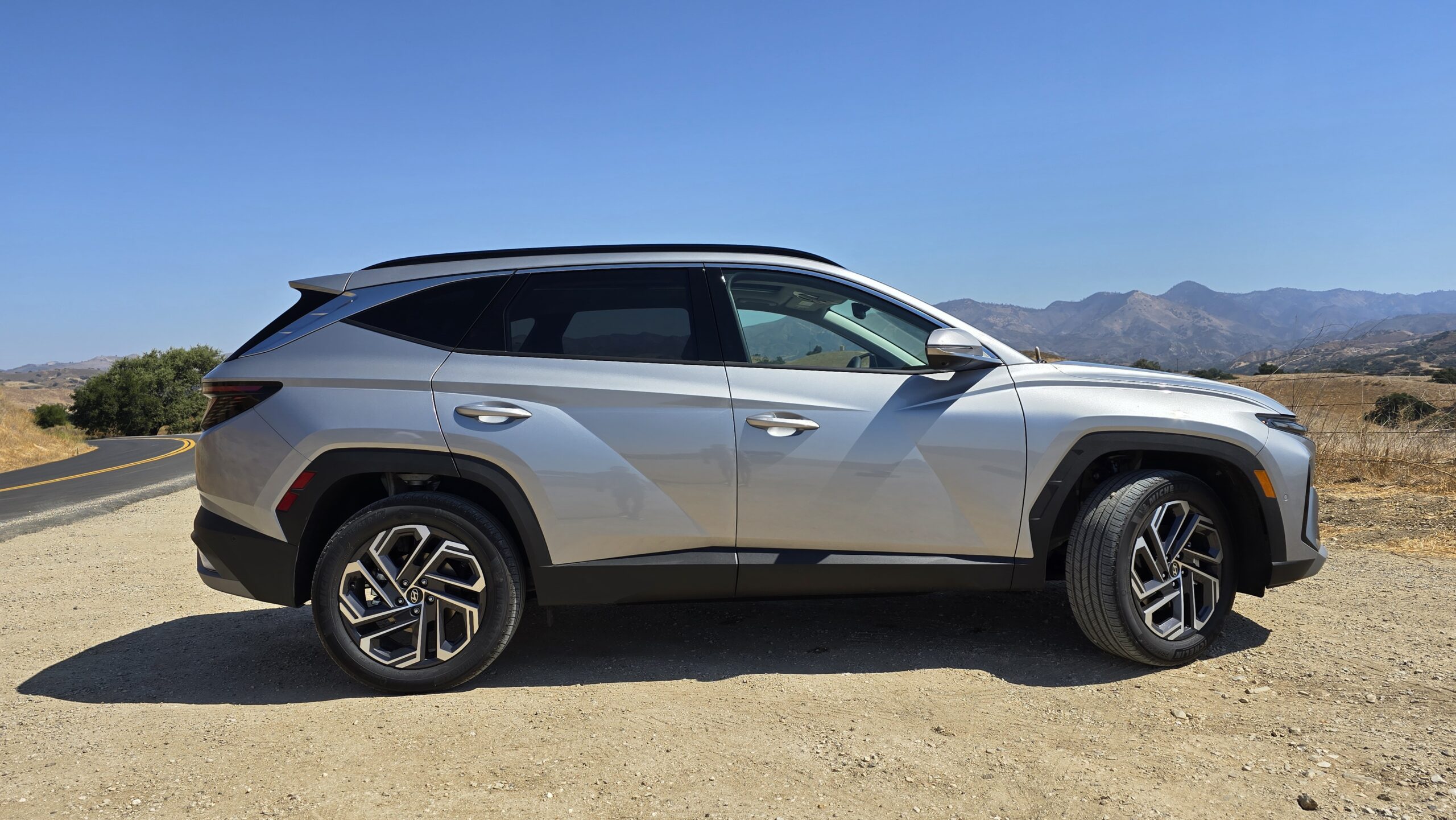
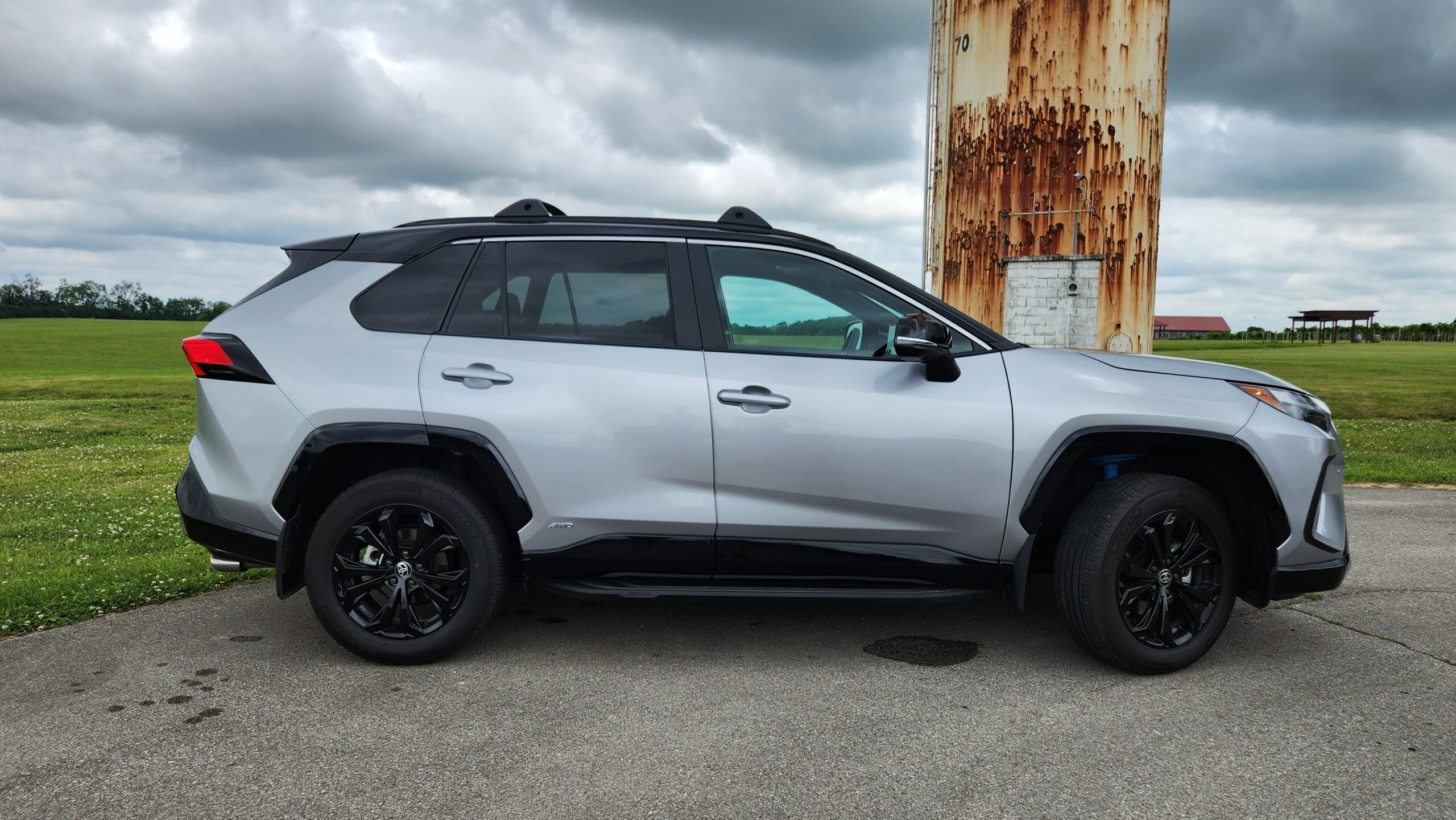
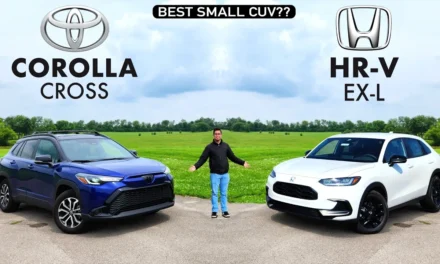
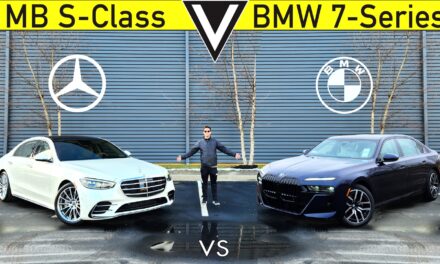
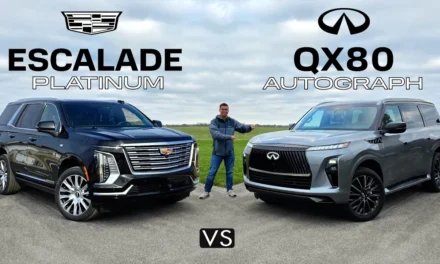
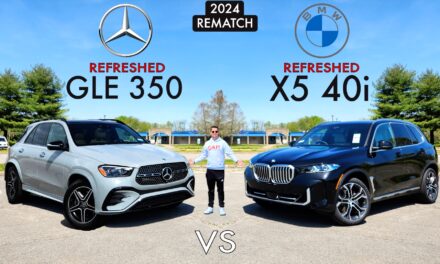




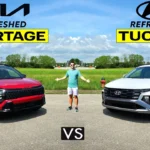

Recent Comments